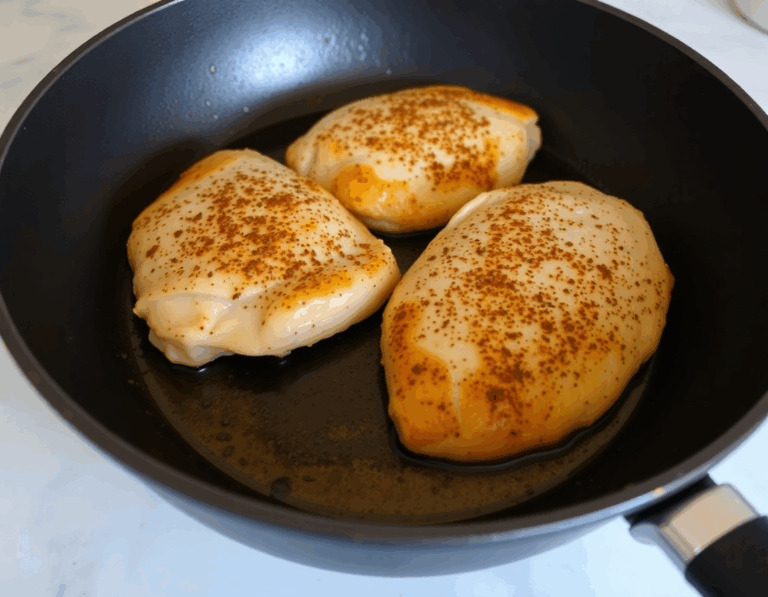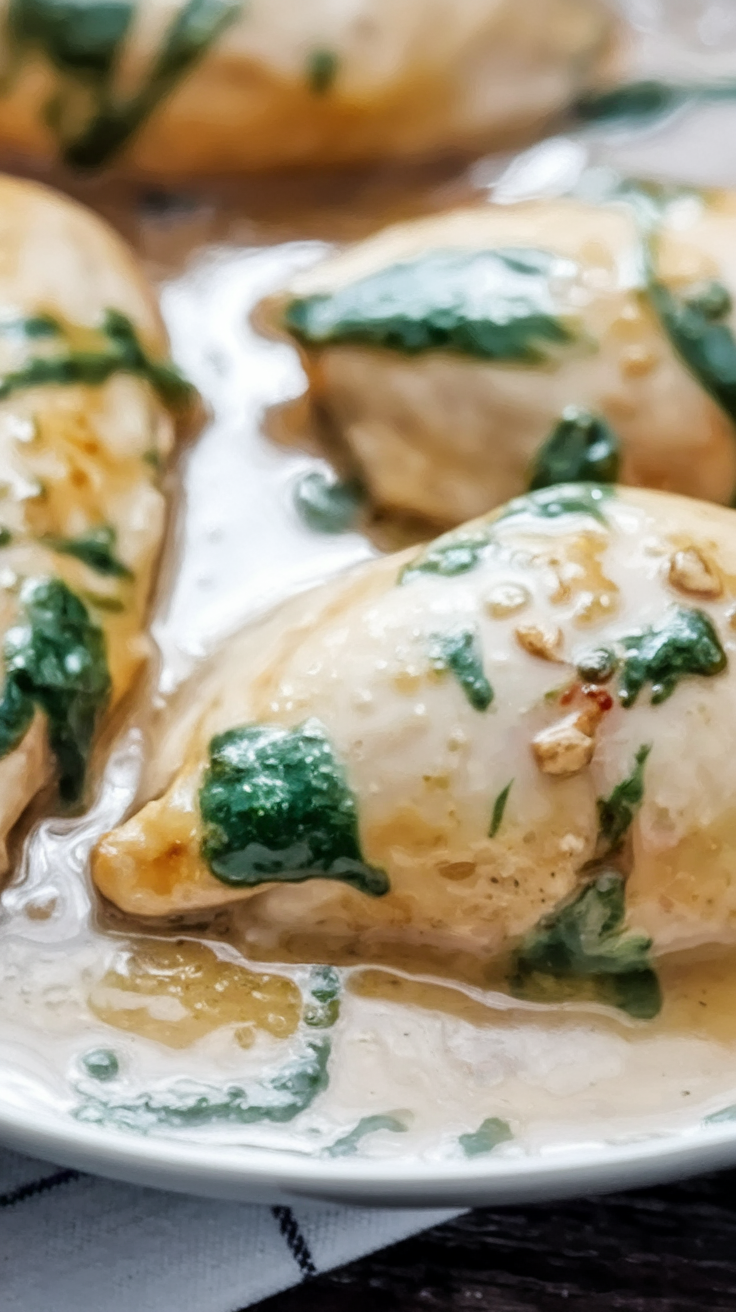Ah, chicken dinners—a staple in my kitchen that never fails to bring a smile to my face, even on the longest days. Picture this: juicy, tender chicken, seasoned to perfection with herbs that remind you of sunlit gardens and a hint of nostalgia. I swear, these AIP chicken recipes are like an unexpected hug from your grandma, warm and familiar, yet somehow surprising every single time.
Steps
- Season both sides of the chicken breasts with salt. Heat oil in a pan over medium-high heat and cook the chicken for 6-7 minutes per side until it reaches 165°F internally. Set the chicken aside.
- In the same pan, add more oil if needed and sauté the onions over medium heat until they become translucent, approximately 2-3 minutes.
- Pour in the chicken broth and white wine vinegar, allowing the mixture to boil and reduce by half for about 3 minutes. This will also help to deglaze the pan.
- Add coconut milk, garlic powder, thyme, parsley, and salt, then lower the heat to medium-low. Let the sauce boil until it thickens by half, stirring frequently for about 3-5 minutes.
- Combine arrowroot starch and water in a small bowl, then stir this mixture into the sauce, cooking for an additional minute to thicken it further.
- Introduce the spinach to the sauce, cooking it for 1-2 minutes until it wilts.
- Return the chicken along with any juices back to the pan, coating it with the sauce. Serve immediately.

Ingredients
- Boneless, skinless chicken breasts
- Approximately 1/2 teaspoon sea salt (such as pink Himalayan)
- 1-2 tablespoons coconut oil (or substitute with lard, bacon grease, tallow, olive oil, or avocado oil)
- Yellow onion (white or red onions can also be used)
- Full-fat coconut milk (without guar gum)
- White wine vinegar (optional; lemon juice can be used as a substitute)
- Chicken broth (or bone broth)
- Garlic powder
- Thyme powder
- Dried parsley
- Arrowroot starch (or tapioca starch as an alternative)
- Water (to mix with the arrowroot starch)
- Fresh spinach (organic preferred; frozen spinach can be used if thawed and drained)
FAQ
- Can Chicken Florentine be prepared in advance?
- Yes, you can make Chicken Florentine ahead of time. Simply follow the recipe, then store it in an airtight container for up to three days. When ready to serve, reheat it on the stove or in the microwave.
- Is it possible to freeze Chicken Florentine?
- Although I haven’t personally tried freezing this dish, it should freeze and reheat well. Store it in an airtight container and allow it to thaw in the refrigerator overnight. Alternatively, you can use the microwave’s defrost setting, taking care not to overheat the chicken. Reheat as needed afterward.
- What are some tips for cooking Chicken Florentine?
- To enhance flavor, make sure your pan is hot before adding the chicken, which helps sear it. Take advantage of the flavorful bits left in the pan from the chicken. If the pan becomes too dry or starts to burn, add a bit of chicken broth to deglaze it. Lastly, don’t overcook the spinach; it only needs a minute or two to warm up.
- Can I use alternatives to coconut oil for cooking?
- Yes, you can use other fats like lard, bacon grease, or tallow if you prefer. If those aren’t available, olive oil or avocado oil will work as well.
- What can I use instead of arrowroot starch?
- If you don’t have arrowroot starch, tapioca starch can be used as a substitute in equal amounts for thickening the sauce.
Tips
- Ensure the pan is sufficiently hot before adding the chicken to achieve a good sear, which enhances the flavor.
- Utilize the flavorful bits left in the pan from cooking the chicken by deglazing with a bit of chicken broth if the pan becomes too dry, as this adds depth to the sauce.
- Avoid overcooking the spinach; it only needs a brief time to wilt, usually just a minute or two.
- If you prefer dredging the chicken, consider dipping it in coconut milk and then coating it with coconut flour or another paleo-friendly flour like cassava or tigernut to add a different texture.
Equipment
- Meat Thermometer – To ensure the chicken reaches the internal temperature of 165 degrees Fahrenheit.
- Non-Stick Pan or Skillet – Essential for cooking the chicken and preparing the sauce.
- Small Mixing Bowl – For mixing the arrowroot starch with water to create a thickener.
- Whisk or Mixing Spoon – Useful for stirring the sauce and ensuring it is smooth.

